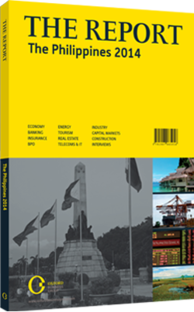Aboitiz Power: Energy
THE COMPANY: Incorporated in 1998, Aboitiz Power (AP) operates as the power unit of the Aboitiz Group. AP, as a publicly listed firm, is considered to be one of the leading local players in the power industry, with interests in various privately owned power generation companies and distribution utilities throughout the country.
AP’s power generation business accounts for the majority of the company’s earnings, producing 85% of its total income during the first half of 2013. In 2012 the company had an attributable capacity of 2353 MW, accounting for about 14% of total installed capacity in the country.
FIRST-HALF 2013: Net income fell by some 22% to P9.5bn ($228.95m) for the first half of 2013, largely on account of the weak performance of the company’s generation business. There was a 63% drop in ancillary volumes, to 557 GWh, due to the lower acceptance rate by the National Grid Corporation of the Philippines. Average selling prices also decreased by 11% year-on-year (y-o-y) during the first half of 2013, which overshadowed the company’s 5% y-o-y increase in energy sales, to 5360 GWh.
Furthermore, foreign exchange losses incurred by the company (in relation to its dollar-denominated liabilities) contributed to its earnings decline. Excluding non-recurring gains and losses, core net income went down by 6% to P10.9bn ($262.69m). Moving forward, AP is shifting its power supply agreements to capacity-based contracts in order to provide more stable and predictable cash flows.
GROWTH DRIVERS: Based on September 27, 2013 data from the National Grid Corporation of the Philippines, the Luzon grid had the largest reserve margin of the country’s three systems, at 15.5%. The Visayas grid had a margin of 14.8% and Mindanao had just a 0.02% margin of reserves. The reserve margin, which compares reserves to peak demand, measures the system’s ability to deal with breakdowns or sudden surges in demand. It therefore appears that Mindanao is in dire need of additional capacity to protect against power failures.
DEVELOPMENT: The Philippines’ strong economic performance is expected to boost demand for electricity. This, coupled with the lack of generating capacity at existing power plants, provides opportunities for power companies to expand their businesses and benefit from the developments in the power sector. Strong demand and a lack of supply will push prices up, directly benefitting power companies as demand for electricity is highly inelastic. Beyond the capacities currently committed by the private sector, the Philippines still needs about 8100 MW in additional capacity to meet expected demand and the grid’s required margins.
STRATEGY: AP’s low leverage ratios (with a liabilities/equity ratio of 0.90x) provide it with enough leeway to raise funds and make capital investments to increase its attributable generating capacity over the next few years. In addition, its experience in the industry gives it an edge in bidding for power assets that are yet to be privatised by the government. Projects in the pipeline include four power plants in Luzon, one in Visayas and five in Mindanao. These projects will have an additional beneficial capacity of 1197 MW in the next three to four years.
AP, however, faces competition in the development of new power plants, bidding for existing ones and in securing the funding sources needed to finance these undertakings. A possible oversupply situation may arise in Mindanao in the next three to five years if all the plants, with a total capacity of over 800 MW, are indeed developed as planned. Major conglomerates have begun forays into power and other capital-intensive industries as they see the need created by rising demand and the potential of these industries going forward. Being one of the leading players in the market, however, AP will be able to bank on its experience and expertise in its undertakings, putting it in a strong position.
You have reached the limit of premium articles you can view for free.
Choose from the options below to purchase print or digital editions of our Reports. You can also purchase a website subscription giving you unlimited access to all of our Reports online for 12 months.
If you have already purchased this Report or have a website subscription, please login to continue.

